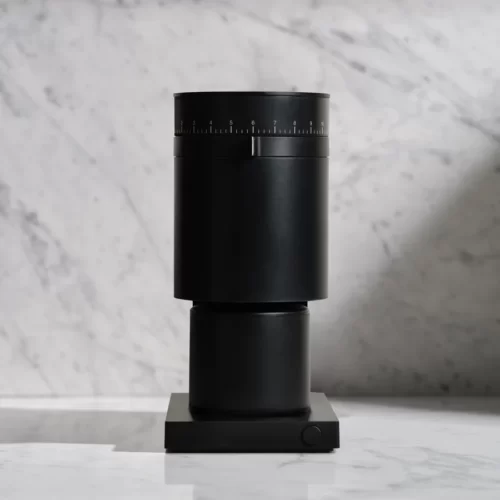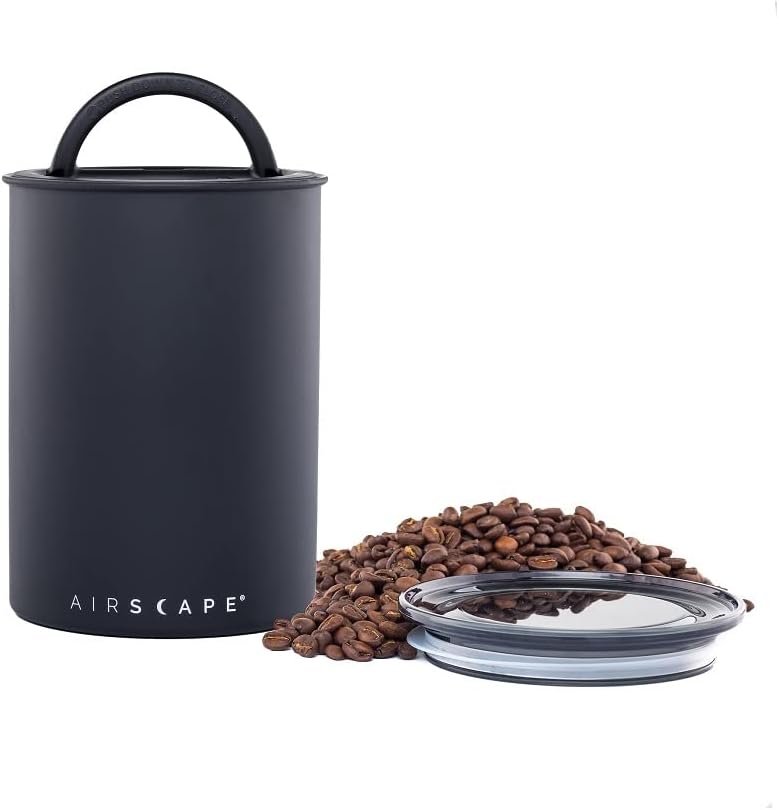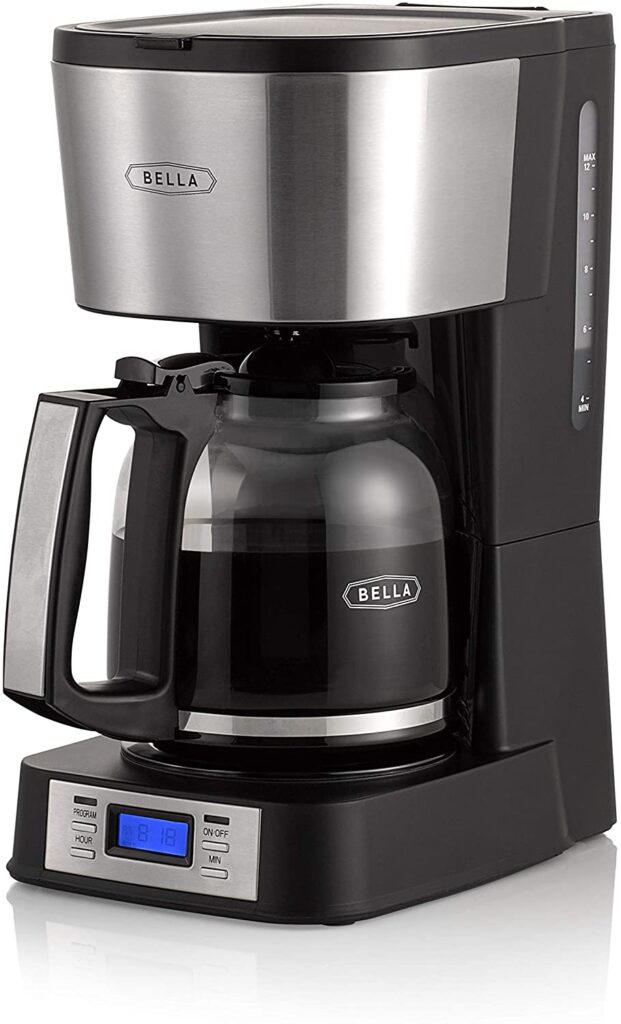Master The Ratio For Drip Coffee With 1 Coffee Water Ratio

Heads up: This content is reader-supported, meaning we may earn a small commission if you click on some of our links.
We’ve all been there. You buy a bag of expensive, high-quality coffee beans, grind them, and brew a batch of coffee in your drip coffee maker.
You can’t wait to taste the exciting flavor nuances of this new bean, but when you take that first sip, what you taste is somehow both bitter and bland at the same time. What gives?
Many factors affect the taste of the final brew, but commonly overlooked is the coffee water ratio for drip coffee. In fact, this is where many go astray before they even start brewing.
So, is there one ideal ratio for drip coffee? Let’s take an in-depth look at drip coffee and find out.
Table of Contents
What Does Drip Coffee Mean?
By definition, drip coffee is coffee made by slowly dripping hot water through ground coffee. Drip coffee can technically refer to several different brewing methods, including pour-over.
But these days, drip coffee is most commonly made using an electric drip coffee maker. When people use the term “drip coffee,” they typically refer to this rather than other manual brewing methods that also involve dripping coffee.
So, when we refer to the ratio for drip coffee, we refer to coffee made with electric drip coffee makers. For more information on other drip methods, check out our articles on pour over coffee.
Ok, we’ve settled on a definition for drip coffee. But before we get to the ratio for drip coffee, let’s examine other factors that might affect your brew.

Grind Size For Drip Coffee
While the ratio for drip coffee is a critical piece of the puzzle when brewing delicious coffee, we’d argue that getting the grind size right is equally important. And most people fail at this step of the process before they even get to the coffee water ratio.
The size of the grind determines the rate at which the coffee is brewed. An incorrect grind size will result in one of two potential outcomes: under-extraction or over-extraction. Under-extraction occurs when the grind is too coarse and the water moves through the coffee grinds too quickly. The resulting cup will taste sour and acidic.

Over-extraction occurs when the grind is too fine, resulting in a bitter and dull brew devoid of defining characteristics. So, while getting the correct coffee water ratio for drip coffee is essential, it won’t do you any good if your grind is off.
The best grind size for drip coffee is medium. The ground coffee should resemble regular sand.
Getting a precise, consistent grind is critical to brewing the best cup of drip coffee possible. To get the grind just right, you’ll need a burr grinder.

Pre-ground Coffee vs. Freshly Ground
Fresh is best for coffee; just like other fruits, coffee does expire. When green coffee beans are roasted, they release carbon dioxide and oils from within the bean.
The coffee beans begin to oxidize immediately after roasting as the outside of the beans is exposed to air. Once the coffee is ground, more of the bean is exposed to air, thus speeding up the oxidation process (aka, ground coffee becomes stale very quickly).
When you purchase pre-ground coffee, it’s already stale before you even open it (gross). Grinding coffee beans just before brewing ensures maximum freshness and the best possible flavor from the beans.
Pre-ground coffee is typically ground to medium grind size. While this is the correct grind size for drip coffee, buying pre-ground limits your brewing options. Grinding the beans yourself with a burr coffee grinder allows you to experiment with several different brewing methods, which is way more fun.
So always buy the freshest whole coffee beans and grind them before brewing. Store your beans in an airtight container or in the resealable foil bag they came in. Once opened, peak freshness lasts about two weeks (or 90 days unopened).

The Ideal Ratio For Drip Coffee
Now that you know how important the grind size is in brewing epic coffee, let’s discuss the coffee ratio for drip machines.
But is there one ideal ratio for drip coffee? In a word, no.
Now, that isn’t to say that there aren’t guidelines and suggestions for the best ratio for drip coffee, but when it comes down to it, coffee is a very personal experience.
Sorry to leave you hanging there.
The coffee experience is highly subjective, and drip coffee is no exception. As with any brewing method, drip coffee brewing requires experimentation to figure out how to make the perfect cup of coffee.
So, what’s our recommended ratio for drip coffee?

We advise starting with a 1:15 coffee water ratio and adjusting from there. But for best results, we recommend staying somewhere between 1:15 and 1:18.
Why the range? When deciding on a coffee-water ratio, one thing to consider is how you or your guests prefer to drink the coffee. If the coffee is diluted with cream, this must be considered in the coffee ratio for drip machines.
A lower coffee-to-water ratio (say, 1:15) is a better place to start for those who add cream and/or sweetener to their coffee. If the coffee is consumed black, there is more room to play with the ratio. We find that a 1:17 coffee-to-water ratio works exceptionally well for black coffee, as the additional water draws out more flavor nuances.
Another point to consider is the type of coffee bean. While a lighter roast may taste better at a 1:15 ratio, you might find that your favorite medium-dark roast is better extracted at a 1:16 ratio.
But, for most people, a 1:15 ratio of coffee to water will work well. Start here and adjust as needed.

How To Measure Coffee Per Cup
Now that you know to start with a 1:15 ratio for drip coffee, how exactly do you measure the coffee and water? In grams? Ounces? Cups?
First things first: when referring to the capacity of a drip coffee maker, a cup is not 8 ounces. Using the standard drip coffee maker measurements, a “cup” size is typically 5-6 ounces. And considering most Americans consume coffee in a 10-12 ounce mug, one “cup” from a drip coffee maker really equates to half a mug of coffee.
For this reason, using a scoop-to-cup ratio is a highly inaccurate method for measuring the coffee water ratio. Another problem with using a scoop to measure coffee is that densities and weights vary from bean to bean, so, ultimately, the scoop method will never be accurate.
If using a scoop to measure coffee, you’ll want to stick to a tablespoon-sized scoop to be sure you’re getting the right ratio for drip coffee.
When you use a tablespoon for the ratio, coffee water amounts will differ as the units of measurement aren’t interchangeable. The best ratio for drip coffee using a scoop and drip coffee maker measurements is 1:4 or two tablespoons of coffee for every 8 ounces of water.

But to be much more accurate and to make the math more manageable, we prefer to use a scale and measure both coffee and water in grams.
So, for our 1:15 coffee water ratio, we use 60 grams of coffee and 900 grams of water. This recipe for drip coffee yields about 32 ounces of coffee.
How To Clean Drip Coffee Makers
While the ratio for drip coffee is a critical piece of the brewing puzzle, cleaning your drip coffee maker is also essential in ensuring the best brew possible.
Drip coffee makers should be cleaned regularly to avoid the growth of bacteria and mold on any of the components. Think about it: mildew and bacteria thrive in moist and warm environments. Aka, your coffee maker.
The best way to keep your drip coffee maker fresh is to clean it daily (sigh). But it’s easier than you think. After use, wash the pot, reusable filter, and other removable components with warm water and dish soap.
Ensure the water chamber is completely empty and leave the lid open to let the chamber dry completely. That’s it!
We also recommend a monthly cleaning for the internal parts that soap and water can’t easily reach. To accomplish this, pour about 4 cups of undiluted white vinegar into the water chamber and let it sit for 30 minutes.
Run the brew cycle with the vinegar, then follow this cycle with 2-3 cycles of water. Dry the machine completely, and you’re set.

Final Thoughts: Ratio Coffee Water
Now that you know a bit more about finding the right coffee water ratio for drip coffee, you’ll be brewing better coffee in no time.
While it takes some experimenting to get the ratio just right, it’s a fun challenge and one that any coffee enthusiast can easily tackle.
Just remember to always buy whole beans, grind just before brewing, and start with a 1:15 ratio. If you get these steps right, you’ll be leaps and bounds ahead of most folks. And who doesn’t love winning at the coffee game?
And the crowd goes wild…

Frequently Asked Questions
Is Drip Coffee Better Than Keurig?
In theory, we love the idea of the Keurig. A one-cup brewer is incredibly convenient for those looking to brew a single cup of coffee with almost zero effort.
But convenience aside, we would argue that in the drip coffee vs Keurig debate, drip coffee dominates Keurig coffee for two fundamental reasons.
First, you control the amount of coffee you use with drip coffee and the coffee water ratio. Additionally, you maintain the freshness of your beans, how they’re ground, etc.
Second, drip coffee is significantly better for the environment. K-cup single-use plastic pods are neither biodegradable nor recyclable, contributing heavily to the amount of plastic piling up in our landfills and spilling into rivers, lakes, and oceans.
In fact, they contribute so heavily to the plastic problem globally that John Sylvan, the inventor of the K-cup and founder of Keurig, says he “feels bad sometimes” that he ever started the company. He does not use a Keurig to make his coffee.
Is Drip Coffee Bad For You?
In a word, no. Coffee has been shown to offer numerous benefits, like antioxidants and other nutrients. Drip coffee is no exception and is considered part of a healthy diet.
For those with caffeine sensitivities, however, coffee may be troublesome. You might consider switching to decaf coffee if caffeine causes side effects or interacts with medications.
But whether it’s caffeinated or decaf, drip coffee is not bad for you.
What Is Automatic Drip Coffee?
Automatic drip coffee refers to coffee made with an electric drip coffee maker. As we mentioned earlier, drip coffee can include coffee made by manual drip methods like pour over.
Referring to drip coffee as automatic drip coffee distinguishes automatic brewing with a machine and manual brewing by hand.
ABOUT THE AUTHOR
Heather Calatrello
Heather is the head coffee roaster and founder of ShedLight Coffee Roasters in San Diego, CA. Her solar-powered coffee roastery was recently the subject of a BlueDot Living dispatch, and she has repeatedly been featured in Food & Wine, Real Simple, Parade, and more.

